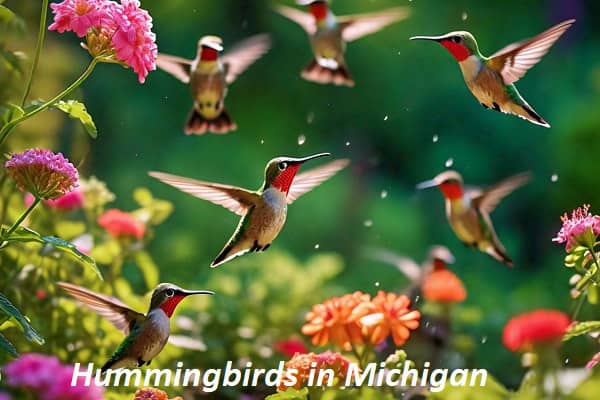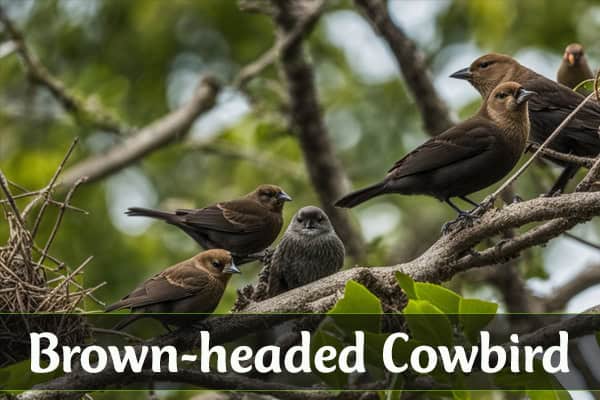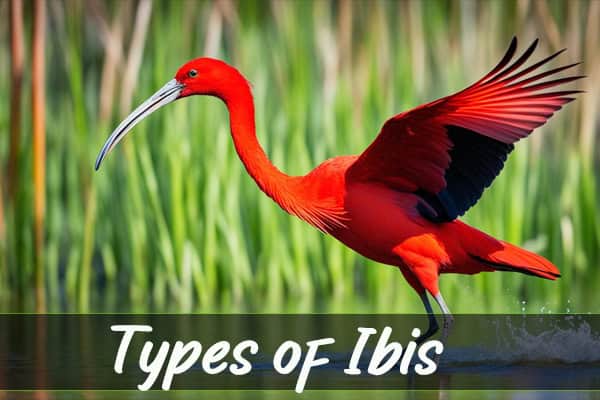6 Types Of Hummingbirds in Michigan (ID Guide With Pictures)
Absolutely! Michigan is indeed home to various species of hummingbirds, adding a dash of color and energy to the state’s landscape. Among them, the ruby-throated hummingbird stands out as the most common, while others like the rufous hummingbird and Anna’s hummingbird make occasional appearances.
Though less common, sightings of the broad-billed hummingbird and Mexican violetear add excitement to Michigan’s birdwatching community. Overall, these tiny yet captivating birds contribute to the beauty and vibrancy of Michigan’s natural environment, making it a delightful habitat for both bird enthusiasts and casual observers alike.
1. Ruby-Throated Hummingbird in Michigan
The ruby-throated hummingbird is a fascinating species that can be found commonly in Michigan. With its brilliant red throat, this small and agile bird adds a splash of vibrant color to the state during the summer months.
These Michigan hummingbirds are known for their distinctive appearance and unique behavior. They have a slender body, long wings, and a thin, needle-like bill that allows them to easily feed on nectar from flowers.
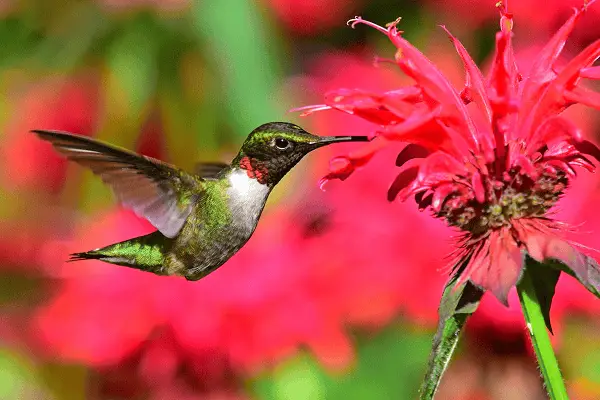
One of the key features of the ruby-throated hummingbird is its ability to hover in mid-air, thanks to its rapid wingbeat of over 50 times per second. This incredible maneuverability allows them to dart quickly from one flower to another, sipping nectar as they go.
The Ruby-throated hummingbird in Michigan seeks habitats that provide a mix of open areas and dense vegetation, such as woodlands, gardens, and parks. These areas supply them with abundant nectar sources and a suitable environment for nesting.
Habitat:
The ruby-throated hummingbird tends to prefer areas with a variety of flowering plants, as well as trees or shrubs that provide perches and shelter. In Michigan, they are often spotted near gardens filled with bright, nectar-rich flowers like bee balm, cardinal flower, and red columbine.
Behavior:
During their stay in Michigan, these hummingbirds are constantly on the move, flitting from one flower to another in search of nectar. They are highly territorial and often engage in aerial displays to defend their feeding territories from other hummingbirds.
- Feeding: Ruby-throated hummingbirds primarily rely on nectar as their fuel source. They use their long tongues to lap up the sweet liquid from flowers. In addition to nectar, they also consume insects and spiders for protein and other essential nutrients.
- Migration: While these hummingbirds are known to migrate south to Central America for the winter, their migration patterns in Michigan are diverse. Some individuals may stay for the entire summer season, while others may pass through as they travel to their winter destinations.
- Reproduction: The breeding season for ruby-throated hummingbirds in Michigan typically begins in late spring. Females construct small nests made of plant material, spider silk, and other natural fibers. They lay tiny white eggs, which hatch into tiny chicks that are nurtured by the female until they are ready to fledge.
Observing the ruby-throated hummingbird in Michigan can be a delightful experience for birdwatchers and nature enthusiasts alike. Their presence adds a touch of magic to the natural beauty of the state.
| Common Name | Scientific Name | Key Features |
|---|---|---|
| Ruby-Throated Hummingbird | Archilochus colubris | Brilliant red throat, slender body, rapid wingbeat |
While less common than the ruby-throated hummingbird, Michigan is occasionally visited by other hummingbird species. The Rufous hummingbird, Anna’s hummingbird, and White-eared hummingbird have been sighted in the state, adding excitement for birdwatchers and nature enthusiasts.
Let’s take a closer look at these unique hummingbird species and their appearances in Michigan:
2. Rufous Hummingbird
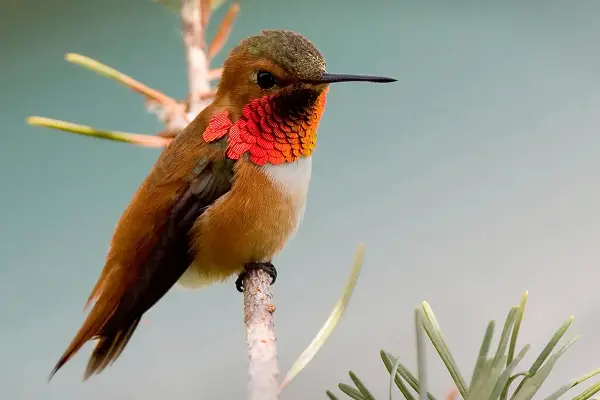
The Rufous hummingbird is a migratory species that passes through Michigan during its journey between breeding grounds in the Pacific Northwest and wintering grounds in Mexico. These hummingbirds are known for their vibrant reddish-brown plumage and their feisty nature. Keep an eye out for them in gardens, woodland edges, and other nectar-rich areas.
3. Anna’s Hummingbird
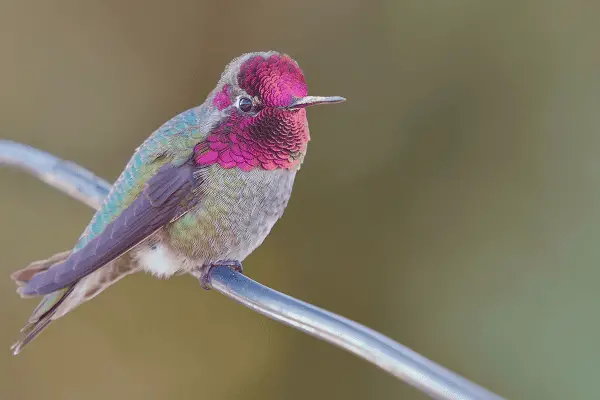
Anna’s hummingbird is primarily found on the West Coast, but occasional sightings have been reported in Michigan. These birds are known for their stunning iridescent green feathers and their ability to produce unique vocalizations during courtship displays. If you spot an Anna’s hummingbird, consider it a rare treat!
4. White-Eared Hummingbird
The White-eared hummingbird is a species native to Mexico and Central America, but it has been recorded in Michigan on rare occasions. This striking hummingbird features a bright white stripe behind its eye, contrasting with its shimmering green body. Their visits to Michigan are highly prized by birdwatchers.

These three hummingbird species bring diversity and intrigue to Michigan’s avian landscape. While their appearances may be infrequent, the possibility of spotting them adds an extra layer of excitement for bird enthusiasts across the state.
Comparison of Rufous, Anna’s, and White-Eared Hummingbirds
| Characteristic | Rufous Hummingbird | Anna’s Hummingbird | White-Eared Hummingbird |
|---|---|---|---|
| Range | Northwest United States to Mexico | West Coast United States (occasional in Michigan) | Native to Mexico and Central America (rare in Michigan) |
| Plumage | Vibrant reddish-brown | Iridescent green | Shimmering green with white stripe behind the eye |
| Migratory | Yes | Resident in some areas, migratory in others | Yes |
| Vocalizations | Varied, including high-pitched trills and whistles | Unique vocalizations during courtship | Varied, including high-pitched chirps and warbles |
Although sightings of these hummingbird species in Michigan may be rare, their fascinating characteristics and occasional visits serve as a reminder of the incredible diversity within the world of hummingbirds. Keep your eyes peeled and your feeders ready for these enchanting visitors.
5. Broad-Billed Hummingbird and Mexican Violetear in Michigan
While the ruby-throated hummingbird is the most common species found in Michigan, there have been occasional sightings of the broad-billed hummingbird and mexican violetear in the state. These rare visitors bring a burst of vibrant colors and unique characteristics to birdwatchers and nature enthusiasts.
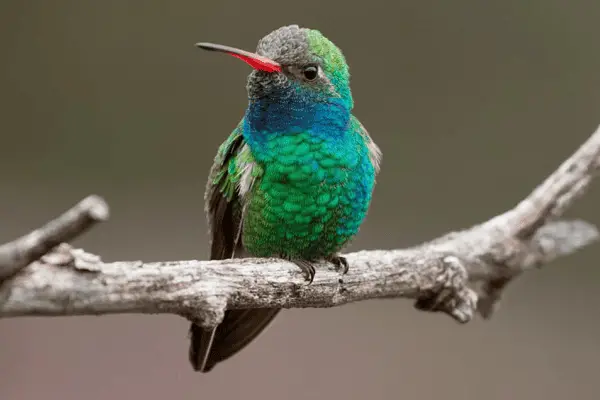
The broad-billed hummingbird (Cynanthus latirostris) is known for its iridescent green plumage and its strikingly long, straight bill. Native to Mexico and the southwestern United States, this species occasionally ventures into Michigan during migration. Its vibrant hues and graceful flight make it a sight to behold.
6. Mexican Violetear
The Mexican violetear (Colibri thalassinus) is another rare visitor to Michigan. With its shimmering green feathers and violet highlights on its throat, it adds a touch of exotic beauty to the state’s hummingbird sightings. This species is predominantly found in Central and South America, so spotting it in Michigan is considered quite special.
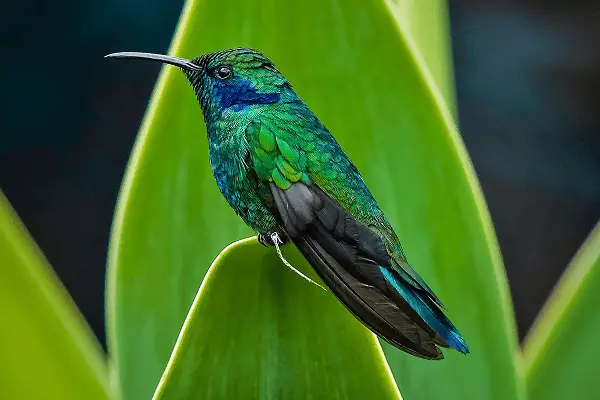
Observing the broad-billed hummingbird and mexican violetear in Michigan provides a unique opportunity to admire the diversity of this avian species. Their occasional presence serves as a reminder of the wonders of migration and the interconnectedness of ecosystems.
Notable Characteristics
- The broad-billed hummingbird has a distinct long, straight bill, allowing it to feed on specific flowers with deep corollas.
- The mexican violetear showcases vibrant green plumage and unique violet highlights on its throat.
- Both species possess remarkable flight agility, enabling them to hover in mid-air, perform intricate aerial maneuvers, and quickly dart from flower to flower.
Frequency and Distribution
The broad-billed hummingbird and mexican violetear are rarely seen in Michigan, as their regular range extends further south. However, occasional sightings provide exciting opportunities for dedicated birdwatchers and contribute to the scientific understanding of hummingbird migration patterns.
Exact data on the frequency and distribution of these species within Michigan is limited due to their rare appearance. However, avid birders and researchers document these sightings as valuable contributions to ornithology.
Conservation Efforts
Due to their limited presence in Michigan, specific conservation efforts targeting the broad-billed hummingbird and mexican violetear within the state are not widely implemented. However, it is important to support overall conservation measures that safeguard habitats and resources for all hummingbird species.
By promoting native plants that provide nectar, planting gardens free of pesticides, and contributing to bird conservation organizations, individuals can contribute to the well-being of all hummingbirds, including these occasional visitors to Michigan.
Also Visit: White Birds in Florida
| Species | Scientific Name | Native Range | Notable Features |
|---|---|---|---|
| Broad-Billed Hummingbird | Cynanthus latirostris | Mexico and southwestern United States | Long, straight bill and iridescent green plumage |
| Mexican Violetear | Colibri thalassinus | Central and South America | Shimmering green feathers with violet throat highlights |
Wrapping Up…
Hummingbirds in Michigan bring a touch of magic and beauty to the natural environment. From the common ruby-throated hummingbird to the occasional rare visitor, these charming birds captivate us with their vibrant colors and agile movements. Whether you’re a birdwatcher or simply appreciate the wonders of nature, exploring the amazing world of hummingbirds in Michigan is a delightful experience.
The presence of hummingbirds enriches Michigan’s ecosystem, pollinating flowers and spreading the beauty of nature. The ruby-throated hummingbird, with its distinctive red throat, is a familiar sight during the summer months. But keep an eye out for other species that occasionally grace the state, such as the rufous hummingbird, Anna’s hummingbird, white-eared hummingbird, broad-billed hummingbird, and Mexican violetear. Their appearances add excitement and a sense of wonder to the birding community.
So, grab your binoculars, find a comfortable spot, and immerse yourself in the enchanting world of hummingbirds in Michigan. Witnessing their swift flights, sipping nectar from colorful flowers, is a truly breathtaking sight. Take the time to appreciate the intricate beauty of these tiny creatures and the important role they play in our natural surroundings. Remember, the wonders of hummingbirds in Michigan are waiting for you to discover and enjoy.

